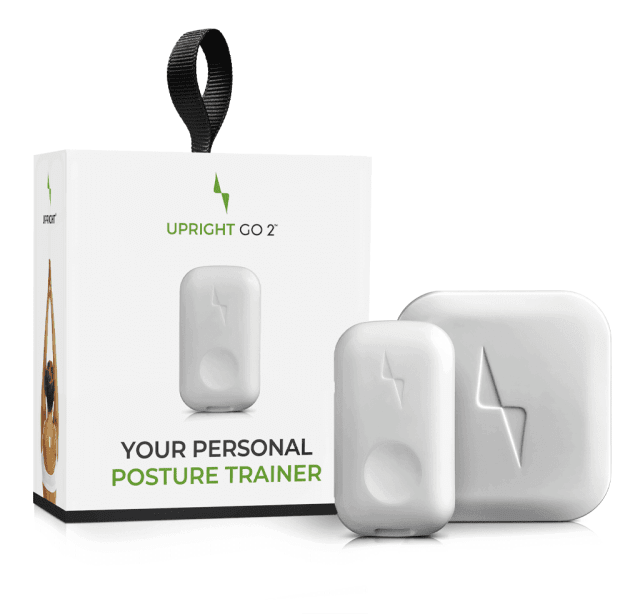Bad Posture: How It Hurts and How You Can Fix It
Max Frenkel

“Don’t slouch.”
“Sit up straight.”
“Keep your shoulders back.”
As a child, you probably heard some form of those commands once, or maybe even a thousand times. When you were little, these phrases were just words adults liked to say. Now, they hold a much deeper meaning. Bad posture doesn’t just make you look slouched over and closed off; it affects your health.
Bad posture is an epidemic in the U.S. affecting millions of individuals. And it’s not as simple or unimportant as some make it out to be. Poor posture causes more mental and physical health complications than most people know. These complications can have long lasting effects on your overall health, for the rest of your life. Below you’ll find a list of ways poor posture can negatively affect you, and a list of ways you can improve your posture to avoid the negative effects.
5 Negative Effects of Bad Posture
1. Adversely Changes Your Spine
Bad posture changes the alignment of your spine, putting pressure on areas that don’t need it or can’t handle it. In your natural, healthy state, your spine has a healthy curve to its shape. But just like you can train muscles to change sizes, you can train your spine to sit in certain shapes. After you spend years slumping at your desk and standing with bad posture, the natural curve of your spine is lost. In fact, the excessive strain on your spine can become so bad that it decreases the integrity of your spinal column causing your discs to weaken and compress and your vertebrae to erode. These changes not only cause long-term pain and discomfort, but the new alignment can even make you shorter and stop your ability to absorb shock and maintain proper balance.
2. It Worsens Depression and Stress
As stated earlier, bad posture doesn’t just make you look sad it actually makes you feel sad. A study at San Francisco State University discovered that students who slouched while they walked had increased feelings of depression and stress compared to those who skipped. A similar study at Harvard revealed that the way you carry yourself, with good or bad posture, can affect how you feel. For example, people with good posture saw a rise in testosterone, giving them a sense of power and control, and a decrease in cortisol, the stress hormone. Having positive hormones running through your body can help create a happier version of yourself and the world around you.
3. Digestive Trouble
Bad posture doesn’t just affect your spine; it also affects your innards. It’s easy to notice that poor posture can affect your shoulders and neck because they are visible, but folding your body into unnatural positions will affect all your internal organs just as much. Sitting and standing slumped over constricts your intestines, which can make digestion uncomfortable and contribute to issues such as acid reflux and hernias. Even more surprising, bad posture can impact your metabolism causing you to gain weight and to develop a belly pouch and larger bottom. Your body is designed to run internal processes naturally, but it needs the designated space to do so.
4. Increased Pain
When your body isn’t in alignment, it isn’t happy, and the way your body tells you of its unhappiness is through pain. In fact, bad posture can lead to chronic back pain and disc degeneration. The reason why is because of increased strain on your back muscles, bones, and other parts of your body. Bad posture can cause pain in parts of your body including your hips, shoulders, and neck, which can lead to tension headaches. Your body composition supports the weight of your various body parts, but poor posture creates problems for that support. Just like holding your arm close to your body is easier than holding it outstretched for long periods of time, it is easier for your body to hold the weight of your head directly above your back than it is to hold it slightly forward with no immediate support. Good posture allows your body to support the weight of your head and other body parts effortlessly.
5. Cardiovascular and Lung Issues
Just as slouching hurts your digestive tract, it also hurts your lungs and heart. An Australian study on bad posture found that individuals who sat all day slumped over their desks had a shorter life expectancy and increased risk of cardiovascular disease. Part of that increased risk could be because bad posture also restricts blood and oxygen flow, making it more difficult to breathe, speak, and engage in physical exercise. Every cell in your body needs oxygen to accomplish its job, so it’s important to help oxygen flow through your body as freely as possible.
5 Tips to Improve Your Posture
Now that you’ve learned the problems poor posture can create, let’s talk about how to avoid these issues. There are a few simple things you can do to improve your posture and improve your overall wellness.
1. Strengthen Your Back Muscles
If you want to get rid of your bad posture, first, you need to make it easier to stand and sit up straight. There are a few simple exercises you can do to improve your back muscles. They include squats with weights, lunges, and shoulder rolls. Doing these exercises with proper form a few times a week can make it easier to keep the correct posture. Training your core to hold tight and strong as well will assist your back muscles and your posture. Strengthening certain muscles will allow them to hold your body in correct posture without tiring as easily, helping you hold straight posture for longer. It is crucial to maintain straight posture after your workout is done to ensure you don’t cancel out your hard work.
2. Train Yourself in Good Posture
For most individuals, good posture doesn’t come naturally. That’s why you need to train yourself to sit and stand appropriately. The UPRIGHT Posture Trainer is simple to use and works in just 15 minutes a day. It works by gently reminding you to correct your bad posture and allows you to track your progress over time. Fixing bad habits doesn’t have to be hard.
This discreet device can start improving your health today.
3. Stand Up Often
It’s easier to have good posture when you’re standing. Take regular breaks throughout the day to stand up and walk around your office. You may want to set a timer to remind yourself to take a quick walk or to straighten your back at your desk. Remember to keep your shoulders rolled back and your head held high as you walk or stand.
4. Fix Your Chairs
Since you most often have bad posture when you sit, make it easier on your body to correct the problem by investing in the right chair. Getting your home or office chair set up to assist your posture can make a huge difference. For your office, invest in an ergonomic chair, keyboard, and mouse. Avoid hunching over your keyboard, screen, or phone while you work. Keep your knees slanted down slightly below your hips and directly over your feet. In your car, adjust your seat so your headrest is in the middle of your head and so your head is not more than 4 inches away from the seat. Try not to talk on the phone while you drive with your phone wedged between your ear and your shoulder. This is an unnatural position that your body is not trained to sit in.
5. Stretch
When you live your life with bad posture, not only do you shorten your spine, you shorten your muscles. Stretching can help lengthen your muscles back to their natural state while also helping you open up your body, so your organs get the oxygen they need. Stretching can also ease sore muscles as they train to provide better posture.
You Might also Like
Search
Sign up to our newsletter
Follow Us On
Popular
Revisit the GO 2/S Device Setup
How to get started
Finding your upright position
How to find your target upright posture
Calibration
Check out the UPRIGHT GO 2

